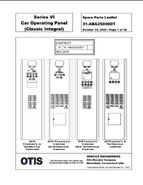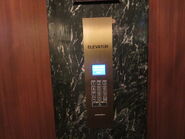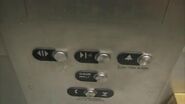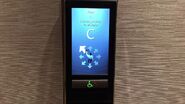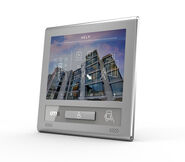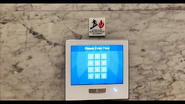- For Otis fixtures found in Asia, Europe and other regions, please refer to List of Otis elevator fixtures.
This is a list of Otis elevator fixtures that are found in the United States and Canada.
1853-1900s
At this time, elevators were operated by pulling ropes. For belt-driven elevators, there are 3 ropes. Pulling the right rope down once makes the elevator go up, and pulling the left rope down once makes the elevator go down, and pulling the middle rope once stops the elevator. Earlier versions were completely non-electric and used woven ropes, whereas later versions were electric and had steel ropes.
1900s to 1950s
Car-switches (1900s-1950s)
When hand-operated elevators were common before, most Otis elevators at that time were using deadman controls, which is usually a car switch used by elevator operators to move the elevator cars. If the car-switch moved to the left, the elevator car goes down and if the switch is moved to the right, the elevator car goes up. Otis made various different car switches. One very rare type of Otis car switch is mounted to the floor of the elevator, and has a very long handle. In some cases, this model of car switch was labeled "Otis Plunger Elevator". Some elevators have a vintage hall call annunciator to announce elevator operator that a hall call outside has been registered on certain floors. This operation stopped being used for passenger service in the 1940s. Some Otis freight elevators have continuous-pressure controls, which are up/down buttons inside and outside the elevator, which move the elevator in the direction marked when held down. This operation was generally were used for up to 6 landings, and stopped being used in the 1960s.
Automatic
When Otis introduced automatic elevators in 1924, elevators at that time were using buttons made of Bakelite. Some hall stations have red lamps above the button to indicate that the elevator is in use. Also note that most of the vintage hall station and car operating panels have the Otis "globe" logo, and today, C.J. Anderson Elevator Products Company, makes "Classic Antique" fixtures that bear a close resemblance to the old Otis fixtures. The car station panel has small round black buttons without illumination. Otis marketed these fixtures as part of their "Finger-Tip Control" automatic elevators & this line of elevators is what made the word automatic used more in the industry and around the world.
1930s to 1980s
Solenoid/latching (pop-out) buttons (1920s-1950s)
These fixtures were used on Otis Signal-Control and early Otis Autotronic elevators before the Electronic touch sensitive buttons were introduced. They appear similar to the black buttons but latched the electromagnetic solenoid on when pressed and pops out when the car stops. With later examples of these fixtures, there is a large dot or number next to the button that lights up when the button is pressed.
"Black buttons" (1930s-1970s)
In this era, most standard Otis elevators used black round buttons with white letterings; in the case of Otis, these buttons were first made with Bakelite, then later, they were made out of Lexan fiberglass[1]. The Lexan buttons all used the same button base, part number 7035A in documents. These buttons are very simple with no illumination indication.
There are a few variants of these buttons. Noticeable versions include a smaller button with smaller numbers (1930s-50s, Bakelite), one with a bigger button and bigger numbers (1960s-70s, Lexan), one with bigger buttons with a plastic cap and different font (1970s, Lexan), one with a bigger button and smaller numbers (1960s, Lexan, mostly in Canada), and one with a bigger button, and bigger numbers, which are in a different font (probably Lexan, might only be used in select countries). There is also a vandal resistant version, with metal buttons (1970s). Floor counters were simply metal plates with illuminating numbers, mainly going horizontally. There were also illuminating squares starting in the 1960s. The Lexan versions were discontinued in the late 1970s.
Some YouTube elevator enthusiasts refer to these fixtures as Pre-Lexan since they referred to the newer black halo illuminating fixtures as Lexan, although the term is misleading for the most part due to the fact some of these buttons are made out of Lexan.
"Black buttons" with illuminating halo (c. 1964-1980s)
In circa 1964, Otis started to produce an updated version of the "black buttons," making them flush buttons with an illuminating halo (part #A7069A). There are two variants of these buttons, with one having a smaller halo (the 1960s, 1970s, and early 1980s version), and one with a larger, clearer halo, and recessed buttons (the 1980s version, made by GAL for Otis). These fixtures were discontinued in around 1990. They are sometimes seen on Otis Elevonic 401 elevators. Most elevator enthusiasts refer to these fixtures as "Lexan," however that is just the material that the buttons are made of.
Electronic Touch buttons (1950s-1976)
From 1955 until 1976, Otis produced touch sensitive buttons with an illuminating halo. Versions from the 1950s and 1960s had square buttons, and some 1950s installs had arrow shaped hall stations that have a round touch area in the middle and an "arrow" shaped illuminating halo with green up and red down buttons, whereas other installs and 1960s installs had the same square buttons on the hall stations as the COP. 1960s and 1970s installs had round buttons. These buttons used vacuum tubes so that the passenger would only lightly touch the button to go to their floor, which are actually worked by completing a circuit when your finger comes into contact with the button. This all works through a spring behind the touch plate that runs to the Thyratron tube behind the button, which serves as the switching circuit and the light bulb.
The Electronic touch-sensitive buttons were discontinued in 1976 as they were claimed to be a fire hazard[2] - that is to say heat from a fire can activate a landing call, and therefore cause a car to stop at that floor - this very scenario was demonstrated in the 1970s disaster film The Towering Inferno, when a car full of people escaping from the Promenade Room stops on the 81st floor sky lobby where the fire is raging, resulting in their deaths. As the result, many elevators with touch sensitive buttons were modernized for the same reason. In addition, the fixtures are not ADA-compliant.
Rotodial indicators (1940s-1960s)
Rotodial indicators first appeared in around 1940-42. These indicators have a rotating disk with floor numbers printed on it. The disk is behind a round dome shaped glass and has an arrow in the middle of the dial to point at what floor the elevator is at. When the elevator car is moving up, the disk rotates to the right and when the car moves down, the disk rotates to the left. The indicators were changed in around 1955-56 and have a vertical roller, where the number rolls upward when the car goes up and rolls down when the car goes down. Otis referred to this specific indicator as the "Roto-Matic" indicator.
There are patents available to look at for the Circular Rotodial Indicator (US2267271A) and for the Roto-Matic Indicator (US2686907A).
Edge lit indicator (1970s)
Another indicator Otis made in the 1970s was the edge lit indicator. The edge lit display consists of a stack of glass plates with numbers dimpled into their faces. These plates are enclosed in a frame and lit from above or below (some types of edge lit displays are lit from behind, and have curved glass plates) by an array of incandescent lamps. Edge-lit technology was generally known to by the predecessor to nixie-tubes, and have a similar appearance. Therefore, these indicators are often mistakenly referred to as the "nixie-tube indicator." However it has been confirmed by close observation and from parts collectors that these indicators use the edge-lit technology. Only Otis HPA 2000 elevators have this indicator.
IEE indicators (c. 1976 to 1980s)
From the 1970s to the 1980s, Otis used an indicator made by IEE, or Industrial Electronic Engineers. This indicator was most likely custom made for Otis, or Otis bought the raw IEE indicators and mounted their faceplate/mounting hardware on it. This type of indicator has a rack of 9 bulbs on each side of the display that sit behind a piece of film with numbers cut in it. A mirror directs the light towards the viewing screen, and you get the number of the floor[3]. The IEE indicator is often called the Otis "vanishing" or "disappearing" indicator by several YouTube elevator enthusiasts.
Early 1980s to present
Series 1 (1980s-2005)
Series 1, also referred to as Standard in brochures, is a fairly common fixture line, and has a very distinctive look that has had slight updates over the years. The Unitec button name is "7069AF". They are normally seen on Otis Elevonic 401, and hydraulic elevators from around 1981 up to 2005. The older Series 1 fixtures have flush buttons. The COPs have black plastic trim with either a silver or bronze face plate, while the indicator is slanted down towards the floor. The floor indicator is green (or red in some 1980s hydraulic installs) and is often uses a custom VFD display made by Futaba, but in earlier Series 1 models, an analog indicator is used for buildings with four stories or less. Two vertical rows of floor buttons are used on hydraulic elevators, and three vertical rows of floor buttons are used on traction elevators (with some exceptions). The bottom part of the panel slanted forward are used on traction elevators, and also very rarely used on hydraulic elevators. There is also flat Series 1, where it has a flat panel, and no plastic around the edge of the panel. Some enthusiasts call this "Custom Series 1," as it's very similar to Dover's Custom Impulse, although this is an inaccurate name. The COP on modernizations has a similar appearance to the Series M3 line, so it might have been apart of that line, but no documents with this exact COP have been found.
Series 1 fixtures were redesigned in 1993, where the buttons now protrude from the panel, analog indicators were mainly dropped (was used in a few early hydraulic installations), the door open/close buttons were made white from green, and the alarm button was made white from yellow. Otis also called these their "Advanced Fixtures".
These fixtures are referred to as "Series M1" on modernizations.
Otis Series 1 fixtures were discontinued in 2005.
"Vanity" (1980s-1990s)
These are white round buttons that light up when pressed. These fixtures were made from the late 1980s-mid 1990s and are quite rare. There is a possibility that these fixtures are part of the Series 1 line, and are made out of Lexan by GAL for Otis.
Starting here, Otis fixtures in North America can be very hard to tell apart and are debatable among elevator enthusiasts and even technicians are not 100% sure of the names, with different brochures and documents saying something different or are confusing. There are six different "Series" name fixtures. Series 2 and 4 are nearly identical, and are the hardest to tell apart.
Series 2 (1990s-2014)
Series 2 started being made in the 1990s until around 2014. Series 2 buttons comes with round metallic buttons with either a flush or a projecting design. Vandal resistant buttons have a small circle in the middle instead of a ring, and also has an LED light in the center of the button. On the older versions of Series 2, the floor indicator uses a black rectangular panel where it can be paired with a green vacuum fluorescent indicator, or a red LED indicator, although some older Series 2 installations used a circular shaped indicator. In comparison with Series 4, Series 2 comes with standard applied hall fixtures.
These fixtures are referred to as "Series M2" on modernizations.
Luxury / Series 3 (1990s-2000s)
The Otis Luxury fixtures are normally found in the Elevonic 411, 411M and Double Deck elevators, and were most likely introduced in the late 1980s, or 1991, and made until around the late-1990s or early-2000s. It consists of round concave buttons with green or red illumination halo, green (for up) and red (for down) hall lanterns and either digital or electro luminescent floor indicators.
There are two versions of the buttons. There is a push button version, and a touch sensitive version.
There are also versions of Luxury car buttons where the buttons are mounted on raised metal surround brailles. This version of the button can also be either push or touch sensitive.
There is also a vandal resistant version of the Luxury fixture, the buttons are made from machined aluminum (rather than chromed plastic) and the halo is replaced with a green or red LED in the middle of the button. It is possible that these buttons are actually EPCO SSL, although this isn't confirmed.
Luxury had two types of floor indicators. One is a standard 16 segment digital display, and one is an electro luminescent display, the latter is a black background display with yellow characters. It could also display messages as well as date and time, and in many cases, the arrow would animate when the car stops at a floor.
Some elevator enthusiasts mistakenly call these fixtures "Otis European Fixtures" - as they are also found on North American installations, or "Series 3." While it would make sense for these to be called Series 3, they aren't listed on a most Otis documents, and the ones that they are don't list them as Series 3, but rather just Luxury. Nowadays, Otis's Luxury fixtures have been modified as part of the current Series 4 fixtures in North America, which can still contain the Luxury name.
These fixtures are referred to as "Series M3" on modernizations.
Series 4 (1990s-2014)
Series 4 is similar to Series 2. On the older versions, the hall station options are either surface mounted tall labor saving extender hall stations, or Luxury hall stations. They were also known as "Standard Fixtures" according to an Otis reference, and then eventually "Classic" after Series 1 was discontinued. This series also includes beveled edges, and the car stations are swing front. Like Series 2, Series 4 comes with round metallic buttons with either a flush or a projecting design. Vandal resistant buttons have a small circle in the middle instead of a ring, and also has a LED light in the center of the button. Otis also calls these fixtures the "Luxury Fixtures" as the Luxury fixtures set has been modified as part of the current Series 4 fixtures in North America. These were discontinued in around 2014, however they've been seen on installations up until 2016.
These fixtures are referred to as "Series M4" on modernizations.
Series 5 (2004-13)
Series 5 came out in 2004, and was discontinued in 2013. Its fixtures are similar to the successor and more common Series 6 line, but on a black panel where it has a similar layout to the Series 1. These fixtures are fairly rare since it was only made for about a year and not a lot were installed, most likely because it was an early/prototype fixture line. These are often referred to as "Series 6" or by enthusiasts, although this is incorrect, as these came out before the actual Series 6 came out, and official Otis documents suggest that these are actually Series 5. The "NEL" in the document refers to a button type, which is irrelevant to the series line. Otis documents suggest that Series 6 is Series 5 and Series 5 is Series 6.
Series 6 (2005-13)
Series 6, also referred to as "Standard" in brochures, came out in 2005, and was the replacement of Series 1. The hall station has curved sides. The buttons are the same ones that are used in Series 2 and 4 with red lights (sometimes green). Series 6 indicators feature a red, two-digit sixteen segment LED displays, and have curved sides. Its in-car lanterns are usually referred to as "egg lanterns" since they look like an egg. They are believed to be a rip-off of the Schindler HT lantern. Although some Series 6 installations use Series 2 hall stations and lanterns. It uses Otis's new chime, which for the down signal uses 2 different pitches, just like Schindler's chime. These are often referred to as "Series 5" by enthusiasts, but official Otis documents suggest that Series 6 is Series 5 and Series 5 is Series 6. Series 6 fixtures are more commonly found in hydraulic elevators more than traction elevators. These were produced until 2013.
Series 7 (2011-2023)
In 2011, along their Series 7 was released by Standard and Luxury Fixtures, cabs, doors and other components. Most documents refer as "Applied" and "Swing-Return," although it is possible they are apart of Series 2 and Series 4. Just like other Otis Fixtures, they also use Micro-Motion buttons with either halo lights or either center LED lights, but they either blue or white, and the phone button has an orange halo and braille. This series also offers a white plastic version of the buttons whose full face full lights up, which is believed on on California codes, but they can found be elsewhere. They are often called "Newer Vanity," but this is not accurate, as Otis has a never used this name. The floor indicator uses white-on-blue sixteen-segment display, and the chimes are similar to the ones of Series 5/6, it has a blue arrows are up and down of Series 1/2/4. Series 7 is used on HydroFit, Gen2 and Skyrise Elevators.
Series 7 fixtures was discontinued in 2023.
Series 8 (2021-present)
Series 8 fixtures came out in 2021 for Gen3 brochures and it has a eView in car display in the same as Standard and Luxury Car Operating Panels with Micro-Motion buttons, such as in car and hall lanterns with white-on-blue sixteen-segment display and so us the indicator, when Series 7 is discontinued and will be replaced by Series 8 fixtures, Series 8 was used on HydroFit, Gen3 and Skyrise Elevators.
Series 9 (2023-present)
Series 9 fixtures is for Gen3 Core Brochures and was introduced in 2023. The Standard Car Operating Panels with Micro-Motion Buttons and are "Applied" and eView with LCD display, in car and hall lanterns with white-on-blue sixteen-segment display and so us the indicator, Series 9 was used on Gen3 Core Elevators.
Unitec M1 Refresh (1980s-2005)
The M1 Refresh is a fixture used for Otis Series 1 modernizations and are only available through order from Unitec, Otis' parts division. The fixtures are Micro-Motion III with the Series 1 panel and the indicator has a rounded square frame. This is not to be confused with Series M1, which is Series 1 on a modernization.
Compass keypads (2005-2013)
Otis' destination dispatch system, named Compass, replaces the conventional call buttons in the elevator lobby on each floor with a wall-mounted keypad panel. The wall-mounted keypads (standard type used in the Compass system) have telephone-style push buttons and a blue LCD display. Otis also made a touch screen version, but rarely used. Button fixtures used inside varies; they can be Series 2, 4, or M3. The destination indicators on the car door jamb are either digital segments or an LCD display. These fixtures, along with Otis Compass was launched in 2005. They have been discontinued and replaced by the new CompassPlus fixtures.
CompassPlus keypads (2013-2019)
When a new version of the Otis Compass system was launched in 2013, Otis updated the destination dispatch keypads and touch screens with a more modern design. The keypad buttons have been redesigned with a new wavy design and illuminating numbers, and the screen interface was re-designed as well. These were also used on the regular Compass systems until it was discontinued in 2019.
Compass 360 keypads (2019-present)
Otis released their third version of the Otis Compass system in 2019. With this release, Otis updated the destination dispatch touch screens once again with a more simplistic/sleek/modern design. The touchscreen was changed from a plastic resistive touchscreen to a glass capacitive touchscreen. The keypad buttons were discontinued (wheelchair button had a slight re-design, keypad still available upon custom order), and the screen interface was re-designed.
Trivia
- The "Series" name is given by the Unitec Parts Company, which is an Otis parts company which provides Official Genuine Otis Elevator and Escalator Parts for preservation and modernization.
- Otis marketed their fixtures in the early 2000s under different names, such as "Classic", "Standard", and "Luxury".
- The Series 5 lantern is a knock-off of the Schindler HT lantern and also the digital Series 6 lantern is a knock-off of the Kone KSS 370-Designer orange lantern.
See also
- List of Otis elevator fixtures - for Otis fixtures found outside North America.
Notes and references
- ↑ June 7, 2014: A Tour Of DieselDucy's Museum
- ↑ Touch Buttons, ASME A17.1, and the ADA - a discussion board in Skyscrapersim Forum
- ↑ Otis Projecting Readout System retrofit brochure (from CEElectronics of England)
- ↑ Elevator Fire Service Demo (All Phases)
External links
- Common Otis fixtures poster
- General Otis fixtures brochure
- Otis Hall Lanterns & Position Indicators brochure
- Otis Pushbuttons brochure
- Beno's Lift Guide - Otis Elevator Company
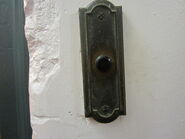
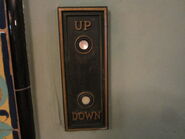


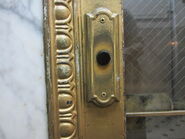
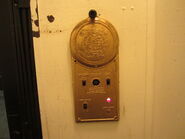
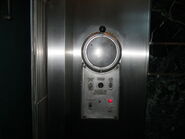

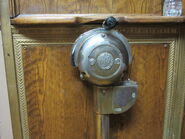
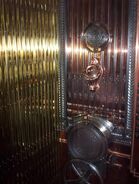
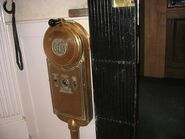
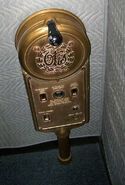
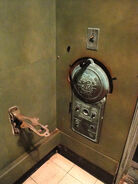

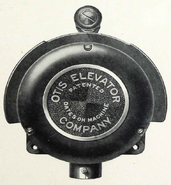
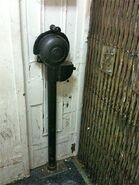
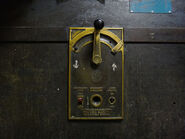
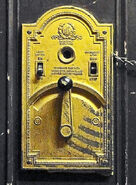
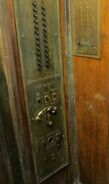
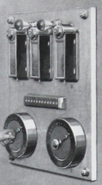
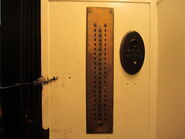

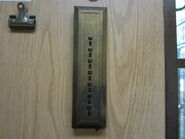

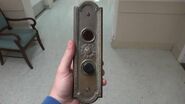
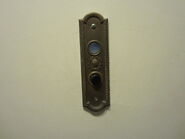
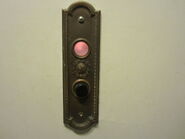
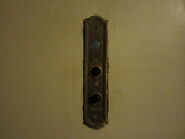
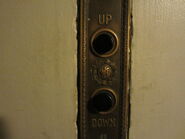
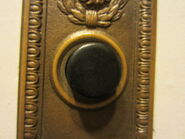
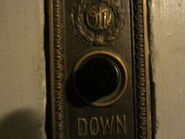
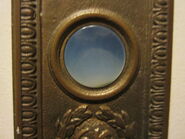
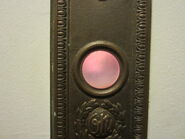
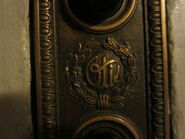
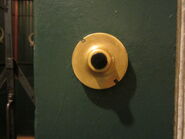
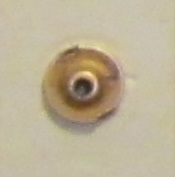

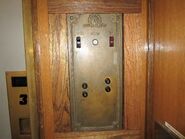
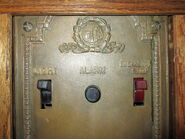
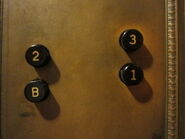
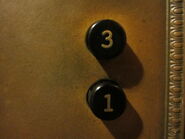
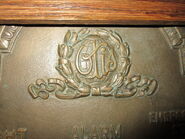
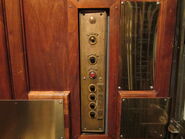
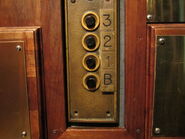
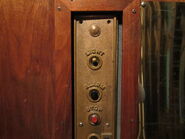
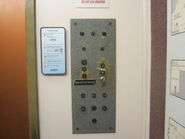
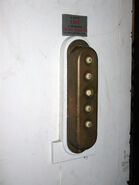
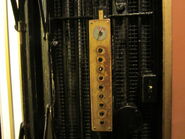

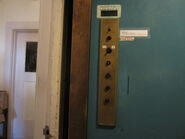
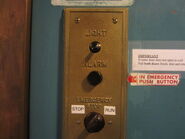
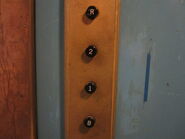
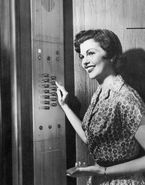


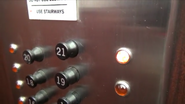
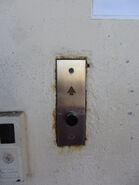
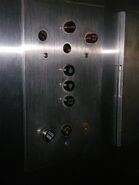
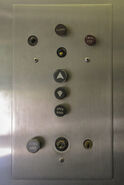
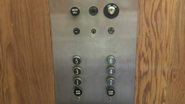

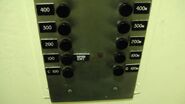

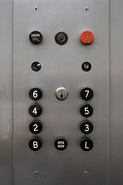
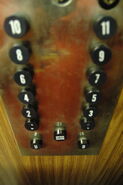
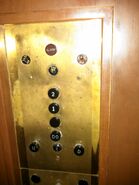
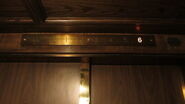
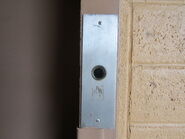
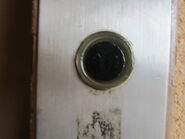
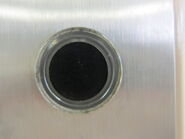
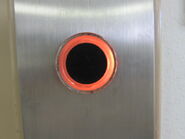
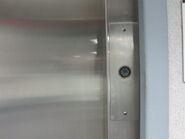
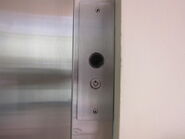
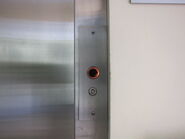
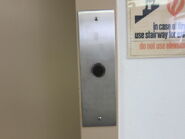
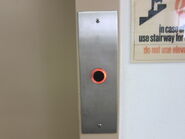
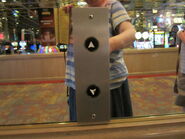
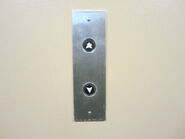
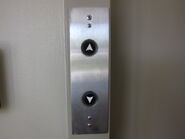
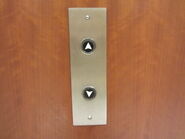
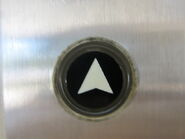
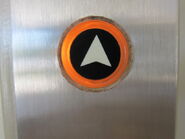
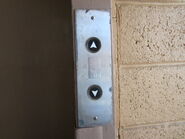
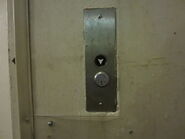
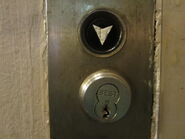
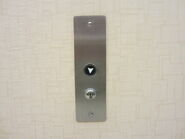
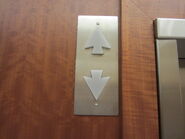
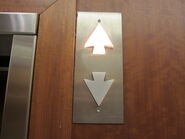
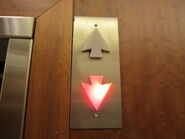
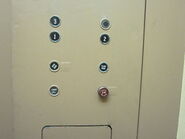
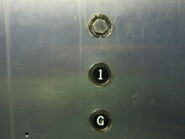
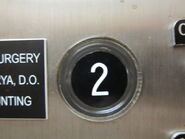
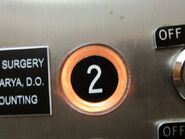
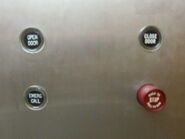
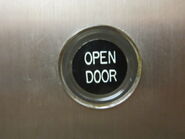
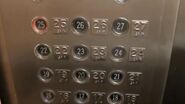
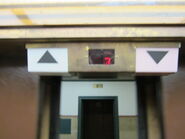
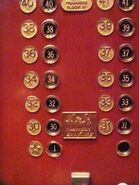
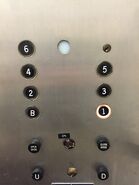
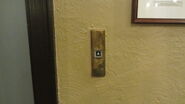
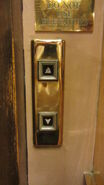
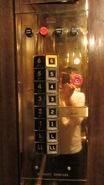


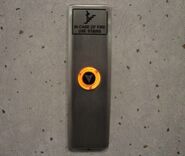
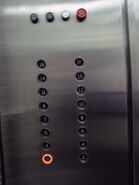
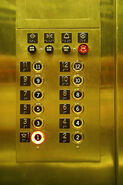
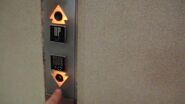
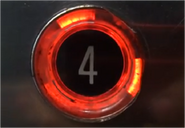
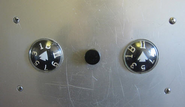
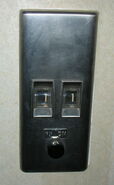
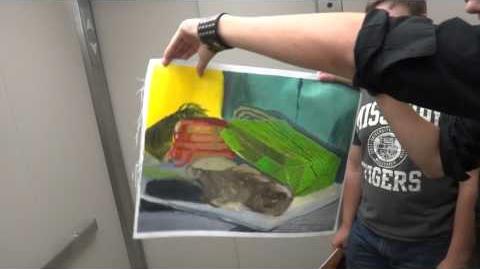
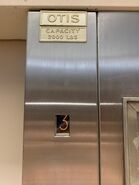
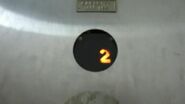
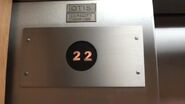
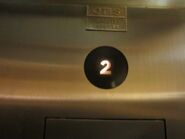


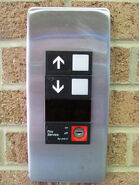


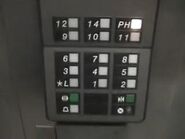

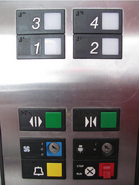
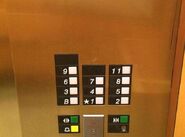



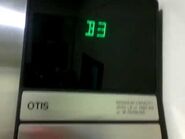
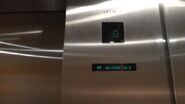
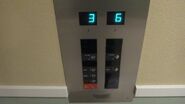
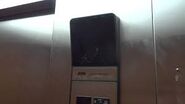
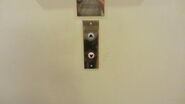
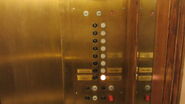
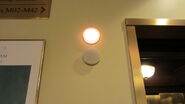
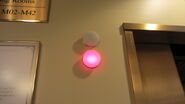
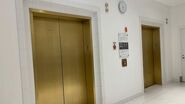
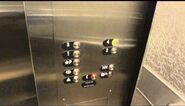
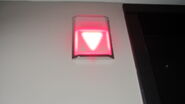
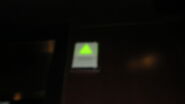
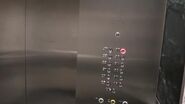
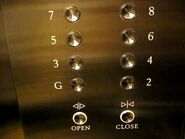



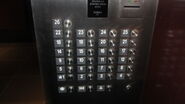
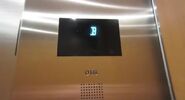
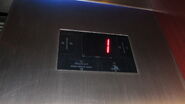
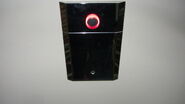
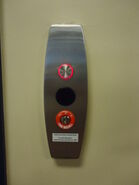
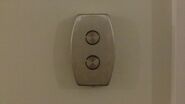
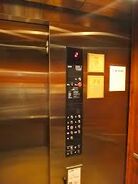
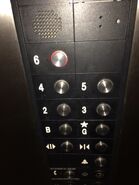
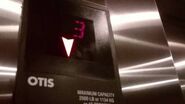

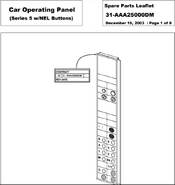
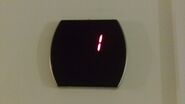
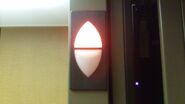
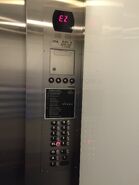
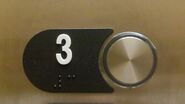
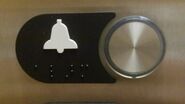
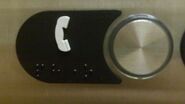
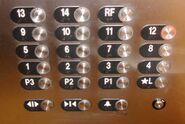

![OTIS Series 5 indicator.JPG (1.47 MB) Another Otis Series 6 floor indicator. Including two informational indicator, the left one means "please exit the elevator when the doors open" and the right one means "building caught fire" or "elevator under fire service mode"[4]. However, no "overloaded" indicator installed in this indicator.](https://static.wikia.nocookie.net/elevation/images/d/db/OTIS_Series_5_indicator.JPG/revision/latest/scale-to-width-down/185?cb=20130610063214)


